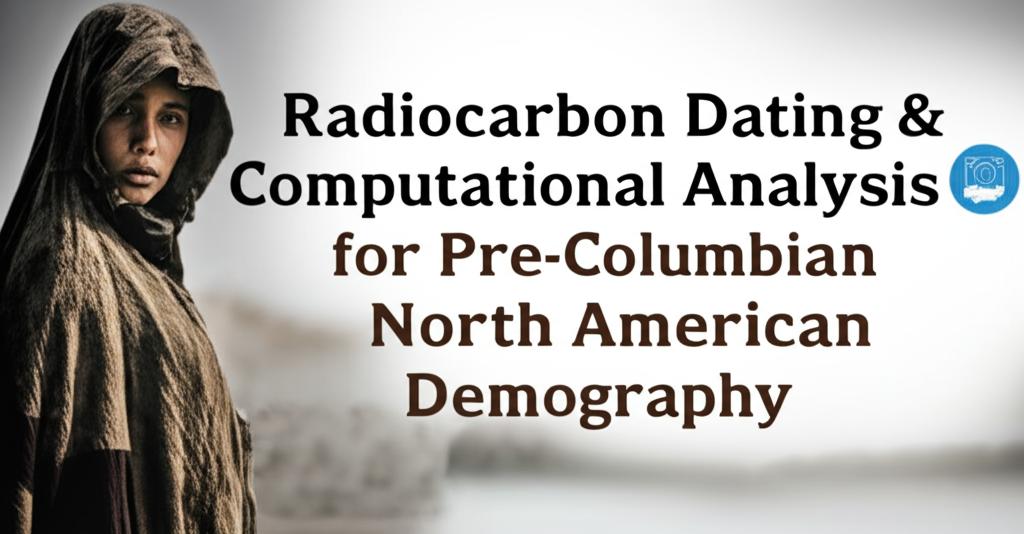The study of Pre-Columbian North American demography has been significantly advanced by the integration of radiocarbon dating and computational analysis. This approach, often referred to as "dates as data," utilizes large datasets of archaeological radiocarbon dates as a proxy for past human population fluctuations.
Key Developments and Findings:- Summed Probability Distributions (SPDs): A core method involves calibrating and summing the probability distributions of numerous radiocarbon dates. The resulting SPD curve is interpreted as a representation of relative population size over time, with peaks suggesting population growth and troughs indicating decline. This method has been applied globally and has become a foundational tool in paleodemographic research.
- Continental and Regional Trends: Recent studies analyzing extensive radiocarbon databases, such as the Canadian Archaeological Radiocarbon Database (CARD) and newly compiled datasets for the continental U.S., have revealed broad-scale demographic patterns.
A continental peak in the Indigenous population of North America is suggested around 1150 CE, followed by a decline and stabilization by approximately 1450 CE, before a further decline after European contact.
Importantly, these analyses highlight significant regional variations. Population peaks and declines occurred at different times in different areas. For example, some interior regions of the continent experienced declines between 1080 and 1300 CE, while populations in areas like the Great Lakes, New England, the Mid-Atlantic, the Central Plains, the Northwest, and California remained relatively stable or even grew until after European arrival.
- Investigating Causes of Decline: Researchers are exploring various factors that may have contributed to pre-contact population declines. These include:
Climate Change: Droughts and other climatic shifts are considered significant potential drivers.
Endogenous Disease: The rise of larger, denser settlements could have facilitated the spread of diseases.
Emigration and Warfare: Population movements and conflict undoubtedly played roles in regional demographic shifts.
- Methodological Refinements and Challenges:
Addressing Biases: Archaeologists are actively working to identify and mitigate potential biases in radiocarbon datasets. These can include variable sample preservation, differing intensities of archaeological research in various regions (sampling bias), and the non-linearity of the radiocarbon calibration curve. Techniques like binning dates from the same archaeological phase and comparing radiocarbon data with other paleo-demographic proxies (like dendrochronology) are employed to increase confidence in the reconstructions.
Statistical Rigor: There is an ongoing effort to enhance the statistical frameworks for analyzing radiocarbon data. This includes developing new methods for time series analysis, moving beyond simple SPD interpretations to more sophisticated modeling, and treating radiocarbon data as count data to better account for uncertainty.
Software and Tools: The development of R packages like rcarbon has provided archaeologists with powerful tools for calibrating dates, creating SPDs, and performing statistical tests to evaluate hypotheses about past population dynamics.
* Integrating Multiple Proxies: To build more robust reconstructions, there's a growing emphasis on comparing radiocarbon-derived demographic trends with other independent lines of evidence, such as tree-ring data (dendrochronology).
- New Perspectives on Pre-Contact Societies: This research is reshaping our understanding of Pre-Columbian North America. It indicates that Indigenous populations experienced dynamic periods of growth, decline, migration, and resettlement long before European arrival. This counteracts older, colonialist narratives of a static or uniformly "dying race." The findings suggest that had Europeans arrived a few centuries earlier, they might have encountered larger and, in some areas, more cohesively organized Indigenous polities, potentially leading to a very different historical trajectory for the continent.
- Global Databases and Comparative Research: The creation of large-scale, standardized global radiocarbon databases is facilitating comparative research on human population ecology and the evolution of social-ecological systems across different regions of the world. This allows for a broader understanding of long-term human-environment interactions.
The field continues to evolve with a focus on:
- Further refining statistical methods to improve the accuracy and interpretability of demographic reconstructions from radiocarbon data.
- Expanding and improving the quality and coverage of radiocarbon databases.
- Integrating radiocarbon data more effectively with paleoclimatic, paleoenvironmental, and paleogenomic data to gain a more holistic understanding of the factors driving past population changes.
- Developing more sophisticated computational models that can simulate and test various hypotheses about demographic processes.
In essence, the combination of extensive radiocarbon dating efforts and advanced computational analysis is providing unprecedented insights into the complex demographic history of Pre-Columbian North America, revealing a dynamic and varied past.

